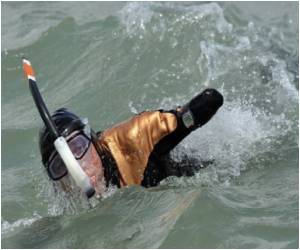Highlights
- Direct stimulation of the nervous system can produce realistic sensation of touch in amputees and quadriplegics
- Prosthetics will never come close to achieving the dexterity of our native limbs without the natural-feeling sensations.
- Naeuro-prosthetics that approximate natural sensations of touch can be built by developing neural interfaces that are embedded with electrodes.
- Implanting these electrodes in the peripheral nerves stimulates the nervous system and helps to reproduce natural sensation of touch.
Natural sensation of touch can now be reproduced in amputees by direct stimulation of the nervous system using neuro-prosthetics. A study which was conducted at the University of Chicago and the Case Western Reserve University is published in the Science Translational Medicine, explains how the nervous system encodes the intensity or magnitude of sensation and how neuro-prosthetics are the future of this field.
The nerve signals from our upper limb or the hand are carried to the brain via the median, radial and ulnar nerves.
The new study describes how interfacing with the brain is possible by implanting devices called neural interfaces, which can be embedded into the nerves of the arm.
The researchers used two male subjects who had lost an arm following traumatic injuries. The research team stimulated the nerves of the subjects through the interface.
They then tested the subjects’ ability to distinguish the magnitude of the sensations evoked after stimulation. The aspects of the signals, such as frequency and intensity of each electrical pulse was changed.
“If you want to create a dexterous hand for use in an amputee or a quadriplegic patient, you need to not only be able to move it, but have sensory feedback from it,” said Bensmaia, who is an associate professor of organismal biology and anatomy at the University of Chicago. “To do this, we first need to look at how the intact hand and the intact nervous system encodes this information, and then, to the extent that we can, try to mimic that in a neuro-prosthesis.”
Earlier in October 2016, in a separate publication from Science Translational Medicine , Bensmaia and his team led by Robert Gaunt, PhD, from the University of Pittsburgh had announced that they were able to restore the sense of touch in a quadriplegic patient using a robotic arm which was controlled by his brain.
In that study, after an array of electrodes were implanted in the areas of the brain responsible for hand movements and for touch via a surgical procedure, researchers interfaced directly with the patient’s brain. This allowed the patient to both move the robotic arm and feel objects through it.
Earlier research from Bensmaia’s lab had predicted that the population spike rate or number of times certain nerve fibers fire in response to a given stimulus, determines how the nervous system discerns intensity of touch, for example, how hard an object is pressing against the skin.
The team then showed that the activation charge rate was also closely related to the evoked population spike rate.
Building neuro-prosthetics that approximate the natural nervous system is the next step in achieving this objective.
Earlier this year in, in a separate paper published in IEEE Transactions on Haptics, Bensmaia and his team led by Benoit Delhaye and Erik Schluter, tested the sensory abilities of a robotic fingertip equipped with touch sensors.
The team tested the finger’s ability to distinguish different touch locations, different pressure levels, the direction and speed of surfaces moving across it and the identity of textures scanned across it.
The robotic finger along with machine learning algorithms, proved to be almost as good as a human at most of these sensory tasks.
A similar combination of such high-quality input with the algorithms and data, neuro-prosthetics that approximate natural sensations of touch can be developed.
Without realistic, natural-feeling sensations, neuro-prosthetics will never come close to achieving the dexterity of our native hands.
“The idea is that if we can reproduce those signals exactly, the amputee won't have to think about it, he can just interact with objects naturally and automatically. Results from this study constitute a first step towards conveying finely graded information about contact pressure,” Bensmaia said.
The study, The Neural Basis of Perceived Intensity in Natural and Artificial Touch, was supported by the Defense Advanced Research Projects Agency (DARPA), the Department of Veterans Affairs, the National Science Foundation and the National Institutes of Health. Additional authors include Matthew Schiefer from the Louis-Stoke Veterans Affairs Medical Center, and Hannes Saal and Benoit Delhaye from the University of Chicago.
Reference
- In a first, brain computer interface helps paralyzed man feel again - (https://www.eurekalert.org/pub_releases/2016-10/uops-iaf101216.php)











